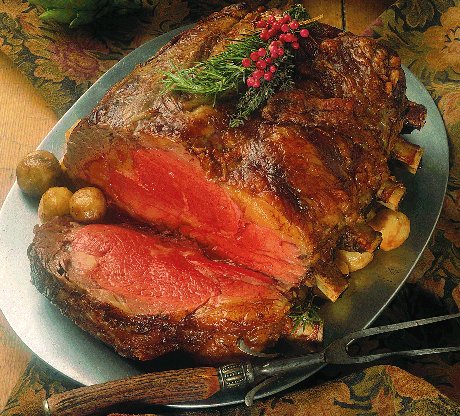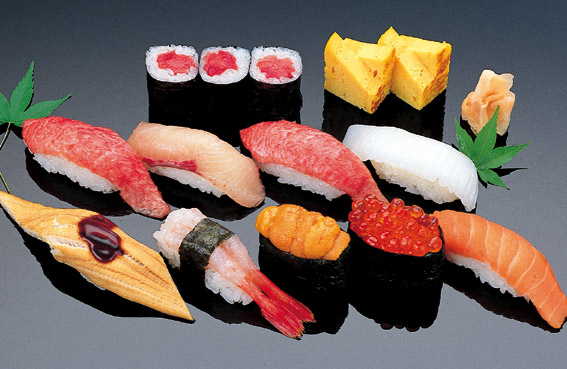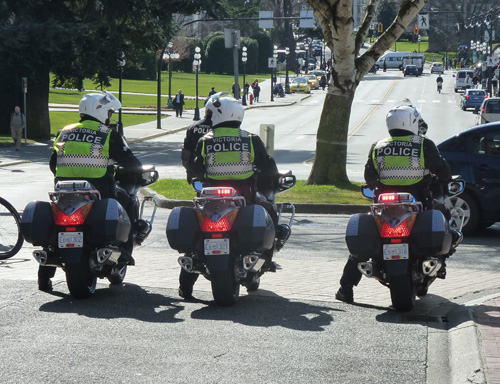Rarefied Beef and Deep Fried Sushi
Who, in their right mind, could resist the
MacDonald’s Happy Meal pictured above?
I picked up on this story from an article in the National Post last week (Rarefied Beef) as it has long been a mystery to me why the lowly hamburger, one of the five main foods in the Canada Health Food Guide and sold by the billions across Canada, is only considered to be safe when it is cooked to the consistency of shoe leather. From my perspective, the hamburger ranks about even with a morning coffee at Tim Horton’s coffee as an essential part of the Canadian diet.
Personally, I like my hamburgers thick, juicy and cooked to a point where there you can still  see a small ribbon of pink after that first delicious, mouth watering bite. When I was little, I used to snipe bits of raw hamburger when mom was mixing the ground meat with egg (also a raw ‘no-no’), onions (you can eat them raw, but I recently learned they suck in bacteria after being sliced), breadcrumbs (to make the meat go further), salt and pepper (pretty safe). A few of you may cringe at knowing at my mom let me have a bite of raw burger?
see a small ribbon of pink after that first delicious, mouth watering bite. When I was little, I used to snipe bits of raw hamburger when mom was mixing the ground meat with egg (also a raw ‘no-no’), onions (you can eat them raw, but I recently learned they suck in bacteria after being sliced), breadcrumbs (to make the meat go further), salt and pepper (pretty safe). A few of you may cringe at knowing at my mom let me have a bite of raw burger?
Well, my mom was a professional cook (today we would call her a Chef) for her entire life (she passed away in her early 90s) and never once did she turn a burger into shoe leather and, guess what, in some eighty years of cooking (she started young) she never poisoned anyone.
Photo (Web) The Violetta Burger, served up by the Rollin’ Etta food van in Portland, Oregon, is reported to be the best of the best in the Pacific Northwest: Link here
Cooking a thick burger until the pink is gone means the surface is likely charred to a crisp and most of the juice long since disappeared into those BBQ flare-ups. I have even watched as people squished the meat down to get rid of the final threat in that juice. Yummy, another hamburger sacrificed to the temperature police. You may just as well have picked up a Big Mac, or taken out one of those thin, frozen patties, thrown it in the microwave and nuked it until every little critter that might have at one lived in that burger, was dispatched to the great beyond. Most certainly, that burger will be totally safe, but what’s the point? Does it sound like a burger you would enjoy?
My mother-in-law (I loved her dearly), a war bride from England (the English wrote the book on overcooked meat), was a person who played it safe with every cut of meat. In true British tradition, she cooked a roast until the inside was as crisp and colourless as  the outside. Mind you, it was mildly OK if you cut it very thin, smothered it in gravy and used plenty of ‘hot’ horseradish. One thing it could never be called was succulent to the last bite.
the outside. Mind you, it was mildly OK if you cut it very thin, smothered it in gravy and used plenty of ‘hot’ horseradish. One thing it could never be called was succulent to the last bite.
It took the better part of ten years to get her daughter (that would be my buddy and life partner), to slowly make the switch from over cooked to a touch of pink, then a rich, red in a roast. She now has no idea why she even liked meat that was cooked to a colourless, dry mass.
Photo (Web) This Prime Rib leaves the mouth watering.
My Dad and his friends seldom cooked anything beyond the point of searing the surface. Unless the meat was running red, it was considered over cooked. Perhaps their impatient hunger was partially the result of the half pack they had each consumed before deciding they were hungry!
For North America at least, the explanation seems to lie in the fact that someone, somewhere, sometime, suffered from food poisoning that was traced to a piece of infected meat. A recent article in the National Post mentioned a 1993 case where 73 Jack in the Box outlets suffered an outbreak of E. Coli poisoning in which four people died and 700 taken to the hospital. The story went virile, food-safe scientists jumped on the bandwagon, a minimum internal temperature of 70oC (160oF) was declared necessary to kill E. Coli and the rest, as they say, is history. It is a good thing those same scientists did not look at people killed or injured in car wrecks or we would all be walking.
A National Post reporter also spoke to one restaurateur, who said he was more than willing to cook burgers that leave a band of pink, as well as a little food value and taste, still intact. That restaurateur had no concerns about E. Coli as he felt basic cleanliness was the key to safe food. If you find a restaurant that overcooks everything, perhaps you should have the health inspectors check out the kitchen.
 Also, as pointed out in the article, restaurants in many countries around the world serve various cuts of fish, chicken, meat and similar products, raw, the belief being, I suppose, that raw foods, including vegetables (many with skins), taste better and provide the best food value.
Also, as pointed out in the article, restaurants in many countries around the world serve various cuts of fish, chicken, meat and similar products, raw, the belief being, I suppose, that raw foods, including vegetables (many with skins), taste better and provide the best food value.
Photo (Web): Consider for a moment how much safer the Sushi in this display would be if it had first been cooked to a temperature 70oC!
In North American cities and towns, the fear capitals of the world, tons of raw fish are sold in Sushi Bars each day. Just watch, some day, someone somewhere will suffer food poisoning after eating their favourite sushi lunch. The media will pick up the story, the fear will spread, the Sushi Scientists will become involved and shortly thereafter, all Sushi Bars will be required to buy thermometers to make sure the fish has been cooked to the magic 70 mark. For the connoisseur of fine sushi, the world will be forever changed.
Apologies to my sister Dianne, you will have to become accustomed to pan or deep fried sushi when you visit our home as we do not wish to take a chance on poisoning you. Yummy!
In closing, I think John stated it best in one of his many hits:
Ministers, sinisters, banisters and canisters
Bishops and Fishops and Rabbis and Popeyes and bye-bye, bye-byes
All we are saying is give food a chance
Harold McNeill
Victoria, BC
Link to National Post article: Rarefied Beef

The temperature police in downtown Victoria
(2341)
Trackback from your site.

